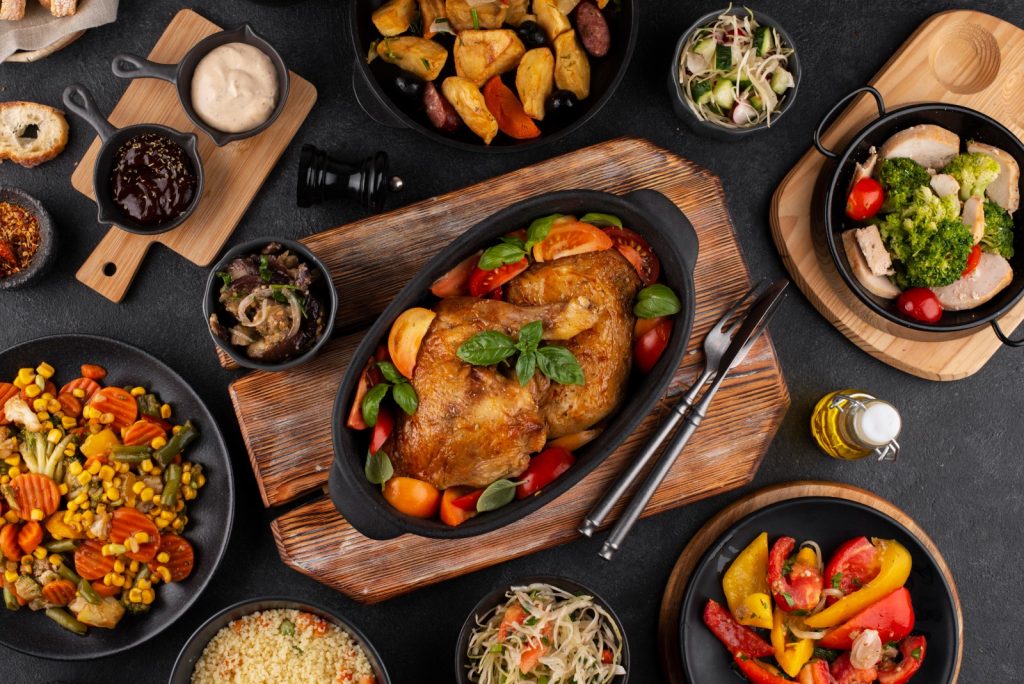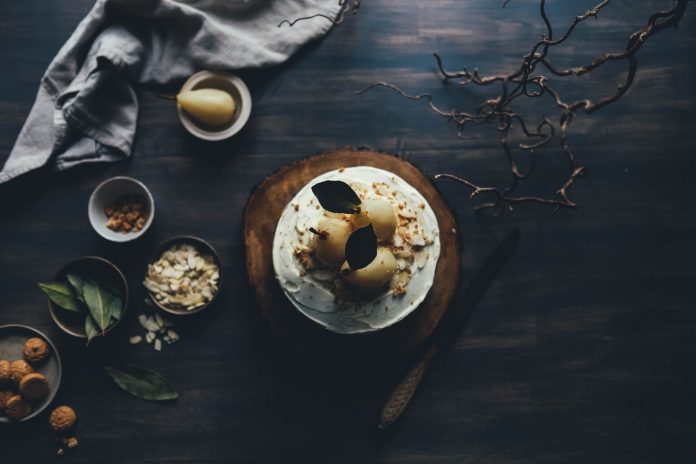Waiting for your food? Do you smell the passionately fierce smoke of the hot sizzler plate? You look at the kitchen door ardently as the waiter walks out with a smile, you track his steps and he is walking right towards you. Your stomach jumps in excitement, your throat waters its way to your mouth and the waiter places the flaming sizzler on the table. The smoke descends as the hot sauce bubbles furiously from the heat of the tray. Rice placed and garnished elegantly with herbs resting on the right edge of the dish. Skewered meat or tofu with charred skin instantly makes your taste buds yearn. Freshly sautéed baby corn, broccoli, carrots and cauliflower in a zingy fusion invite vibrance to the dish. Crispy fries fascinate the scorching periphery. On a bed of burning cabbage leaves is a plating that delights your eyes as much as it does to your taste.
A hearty meal would enchant any palette but its plating might not always. You would have noticed it is important when the dish finally reaches you and if it instantly draws your temptation or not. You would have also discerned the expert lens of chefs on shows like MasterChef where one element is placed out of position or their wrong portions are met with critical opinions.
Plating is most closely experienced by us in restaurants when a freshly cooked plate of food reaches our table. But food styling is a career beyond that. Food stylists experiment with their professions in editorial and advertising domains. Flipping the glossy folios of magazines scenting with refined plating of wholesome meat main courses or chocolaty desserts makes us crave these recipes quite instantly. These dishes are delicately styled by editorial food stylists.
There is another set of food stylists who specialise in advertising. Most times these food stylists also have a hand in photography. They are impeccable in plating dishes for advertisements such as on billboards or for newly opened restaurants or even freshly introduced dishes. Menus are lavishly designed with the chef’s favourites from the hard work of these stylists.
Under the sweating heat of the kitchen and the rush of orders, a chef with immaculate precision adorns a dish. Plating begins with choosing the right plate, tray or bowl. From colour to shape to the material, everything is taken into consideration. A traditional Indian dessert would look classic in a clean steel bowl. On the other hand, a sophisticated dish like grilled fish is likely to be served on a neat white plate.

Tender meats and tofu are cut horizontally to give an elegant look to the dish. Sauces, ones that are thick, are usually piped on the dish along the edges or are smeared on the bottom. Fine and flowing sauces are most times garnished on the top or ringed around the dish. Sauces assist the palette with their spicy and zingy senses, even sweetness and are given on the side as well to make sure that the quantity is intact. Not just with these, but with every element of the dish, portion sizes play a huge role. Too much of anything overcrowds the dish. Too little of an element leaves a bland effect on the tongue. Quenelles of ice creams or mouses are shaped in a silky finesse teasing the sight. A garnish should never be done just for the sake of it but should be both flavoursome and edible. Edible in the sense that even if it is raw, there shouldn’t be wildly big herbs left on the top. Finally, with a clean stroke of the tissue on the plate, spills are cleared and the chef’s smile adds that missing love to the dish.
While plating seems a rather technical and creative job, it is also really personal. A chef or a stylist always adds his/her touch to the plate of food. Some of them like giving height to the dish, and others like to spread it neatly on the plate. A beautiful example of someone who pours out her soul into plating is, Anna Polyviou. She is one of the best pastry chefs in the world. From the lively streets of Melbourne, she borrowed their graffiti and added it to her dishes. Her two most popular dishes, ‘Carrot Cake’ and ‘Anna’s Mess’, both have elements of splattering vibrant graffiti colours on them.
Plating isn’t just about putting the five essentials of a dish on a platter. It is about the piquant mingle of textures, the warmth or coldness of the food, the monotony or radiance of multiple colours and the choice between experimenting and classics. It is, however, most passionately about the chef who peeps from his kitchen, satisfied looking at the smiles blessed with the sight of beautiful food.
































